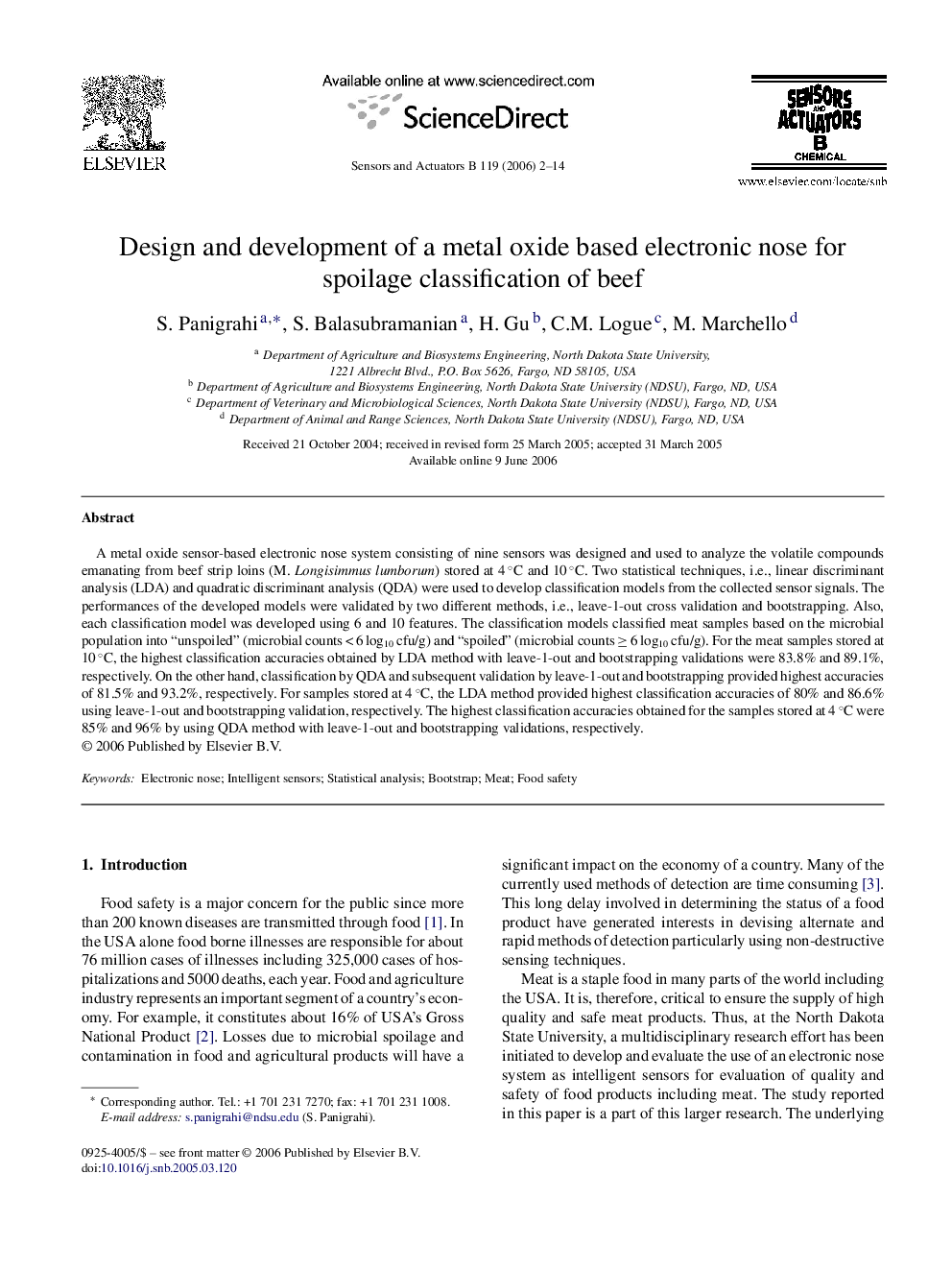| Article ID | Journal | Published Year | Pages | File Type |
|---|---|---|---|---|
| 747105 | Sensors and Actuators B: Chemical | 2006 | 13 Pages |
A metal oxide sensor-based electronic nose system consisting of nine sensors was designed and used to analyze the volatile compounds emanating from beef strip loins (M. Longisimmus lumborum) stored at 4 °C and 10 °C. Two statistical techniques, i.e., linear discriminant analysis (LDA) and quadratic discriminant analysis (QDA) were used to develop classification models from the collected sensor signals. The performances of the developed models were validated by two different methods, i.e., leave-1-out cross validation and bootstrapping. Also, each classification model was developed using 6 and 10 features. The classification models classified meat samples based on the microbial population into “unspoiled” (microbial counts < 6 log10 cfu/g) and “spoiled” (microbial counts ≥ 6 log10 cfu/g). For the meat samples stored at 10 °C, the highest classification accuracies obtained by LDA method with leave-1-out and bootstrapping validations were 83.8% and 89.1%, respectively. On the other hand, classification by QDA and subsequent validation by leave-1-out and bootstrapping provided highest accuracies of 81.5% and 93.2%, respectively. For samples stored at 4 °C, the LDA method provided highest classification accuracies of 80% and 86.6% using leave-1-out and bootstrapping validation, respectively. The highest classification accuracies obtained for the samples stored at 4 °C were 85% and 96% by using QDA method with leave-1-out and bootstrapping validations, respectively.
